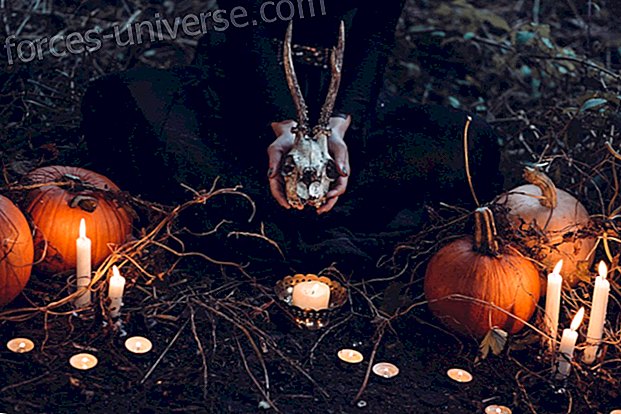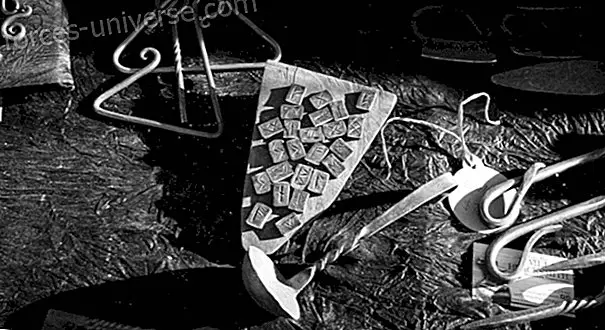
From the Near East we get the namburbû, powerful protection rituals to get rid of evil. Mesopotamia is the name that the Greeks attributed to the territory that stretched between the Euphrates and Tigris rivers, coinciding with the geographical boundaries of present-day Iraq. Mythical land of powerful divinities and ancestral wisdom, the memory of its legacy survives in a distorted way in the pages of the Bible. We will have to wait until the middle of the 19th century so that the first archaeological discoveries and attempts to decipher cuneiform writing encourage the gradual awakening of this forgotten knowledge.
What we know about these ancient rituals we owe to the thousands of clay tablets on whose surface the Mesopotamian scribes inscribed enchantments and ritual instructions. Cities like Assur, Nineveh, Nimrud and Babylon treasured these magical texts and used them to heal the sick, protect the well-being of the community and, as is the case with the Namburbû, divert an evil on its way before it comply. Saved in the libraries, archives and private collections of wise men, kings and cult operators of yesteryear, these tablets constitute a precious knowledge that, thanks to the work of philologists and epigraphists, we can read today.

The concept of Evil in ancient Mesopotamia
The cuneiform texts of mythological and religious content do not show the Good-Evil polarization that is so present in many religious traditions. Instead of the struggle between these two opposing forces that we find in monotheisms, a polytheism dominates the Mesopotamian tradition in which divinities, often capricious, dispense their favors or harms at will . Following criteria that are not always clear, the gods can both favor the individual and fill him with gifts as they can throw him into a pit of misery and misfortune.
It is not even necessary for the human being to know the reasons for receiving divine punishment to suffer its real consequences. The divinity that refuses to favor the human being can also save him from his suffering, providing him with well-being and restoring his lost balance. And, despite the inscrutability of the gods, the religious thought of ancient Mesopotamia admits the possibility of transit and transformation from evil to good . By resorting directly to divinity and to a knowledge inherited from the gods, protection rituals can be carried out so that evil does not reach its victim. This is the key to namburbû .
As far as we know, both the knowledge and the performance of these rituals were in the hands of experts called āšipu or mašmaššu . Through their advice to the king, their zeal in the practice of worship and their wisdom in the fields of the divine and the human, they were responsible for ensuring well-being and prosperity in the country. And it is thanks to his work as scholars and scribes that we know the Namburbû texts, dated between the eighth and sixth centuries BC

What is a namburb protection ritual ?
The term acadio namburb is a loan from the Sumerian word nam-b r-bi, and refers to a type of protection ritual designed to deflect evil announced by an ominous sign . In Mesopotamia, divination played a fundamental role in the management of everyday life and decision making. Archaeologists and epigraphers have identified a large number of tablets that collect methods of observation and interpretation of omens, and that include techniques such as astrology, interpretation In dreams, physiognomies and hepatoscopy.
According to the Mesopotamian perspective, certain signs announced misfortunes and bad omens. Astronomical and atmospheric phenomena such as eclipses and storms, the presence of fungi and mold in homes or temples, the sighting of superhuman or demonic beings, the appearance of certain vegetables in the fields or on the roofs of houses, fire and lightning, the unexpected presence of certain animals such as snakes and scorpions in the rooms, the premature birth of babies or animals, Earthquakes or blood-stained rivers were considered negative signs. These unfortunate signs were taken as evidence that a greater evil was on its way, an evil that jeopardized the well-being of the individual, his family or even the community as a whole and the country.
Given this situation, it was essential to perform one of these protection rituals, a namburb . What is your purpose? Make evil pass by . As read in an original Acadian text, the namburb looks for:
May the evil of these negative signs pass by, may the evil continue long (leaving me) and my house, let it not come near, let it not enter, let it not reach me. May the evil (which announces the prophecy) not be assigned to my body.
Keys for the execution of the namburbû protection rituals
Like most known Mesopotamian rituals, the Namburbû require that offerings of food and drink be made to the gods, accompanied by specific requests for protection, sponsorship or healing. Since divinities can sometimes behave capriciously, it is essential to have their support and approval to make the ritual a success.
Some namburbû required only a few hours to complete, while the execution of others could last for days. The ritual took place well in the space in which the ominous sign had been verified, either in a remote place away from the eyes of the curious.
The āšipu used a great variety of magical techniques to deflect evil. He could resort, for example, to cleaning and purification, to the administration of medical material, or to the application of removal and reversal techniques such as substitution, which consisted of using figurines or objects that represented the person on whom the evil will fall. to replace it These statuettes or objects that had been in contact with the victim of the prophecy were destroyed or thrown into the river to suffer, in this way, the consequences of the bad omen. It was the figurine that broke instead of the body, family or house of the victim. Sometimes, textual fragments of namburbû were written on amulets that were then worn around the neck as protection.

In the following namburbû, which seeks to get rid of the evil augured by the presence of ants in the house, that millenary wisdom unfolds that, recognizing the effective possibility of evil, creates powerful mechanisms to avoid it and convert it into balance and happiness:
Namburbû to (counteract) the evil of the ants that have appeared in someone's house, so that the evil does not approach either the person or his house. His ritual: you will spread smelly oil on the ants and their anthill. You will bury plaster (and) horned soap plant in the tunnel (of the anthill). You will mix dust from a ship, clay from a river meadow and dust from the outer threshold of a door in well or river water, and spread it (over the anthill). You will place censers with juniper and myrrh on both thresholds, and the evil will dissolve.
SOURCES
- Lenzi, A. 2011. Reading Akkadian Prayers and Hymns: A Reader . Atlanta: Society of Biblical Literature.
- Maul, SM 1994. Zukunftsbewältigung: Eine Untersuchung altorientalischen Denkens anhand der babylonisch-assyrischen Löserituale (Namburbi) . Mainz am Rhein: Verlag Philipp von Zabern.
- Maul, SM 1994. “How the Babylonians Protected The Self against Calamities Announced by Omens”. In SM Maul (ed), Festschrift für Rykle Borger zu seinem 65. Geburtstag am 24. Mai 1994: Tikip santakki mala bašmu . . ., pp. 123-129. Groningen: Styx, 1998.






